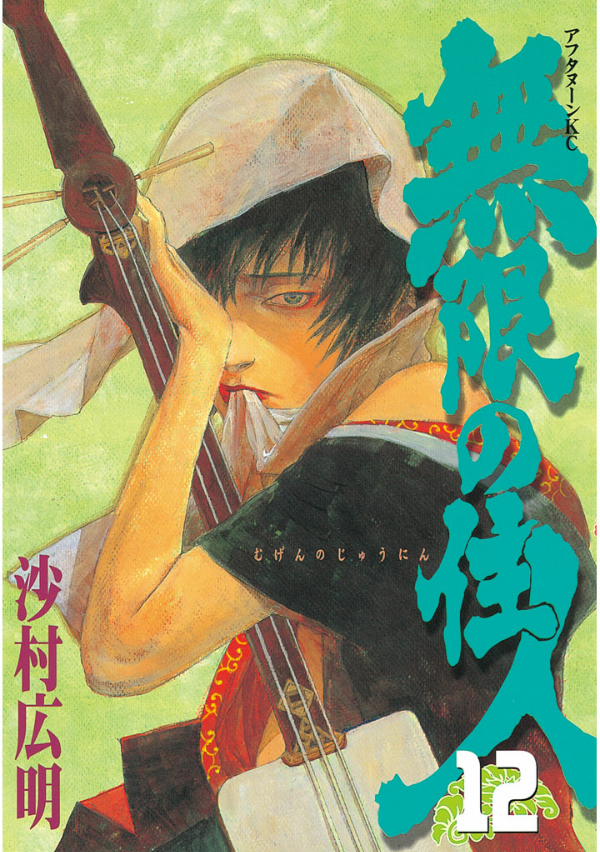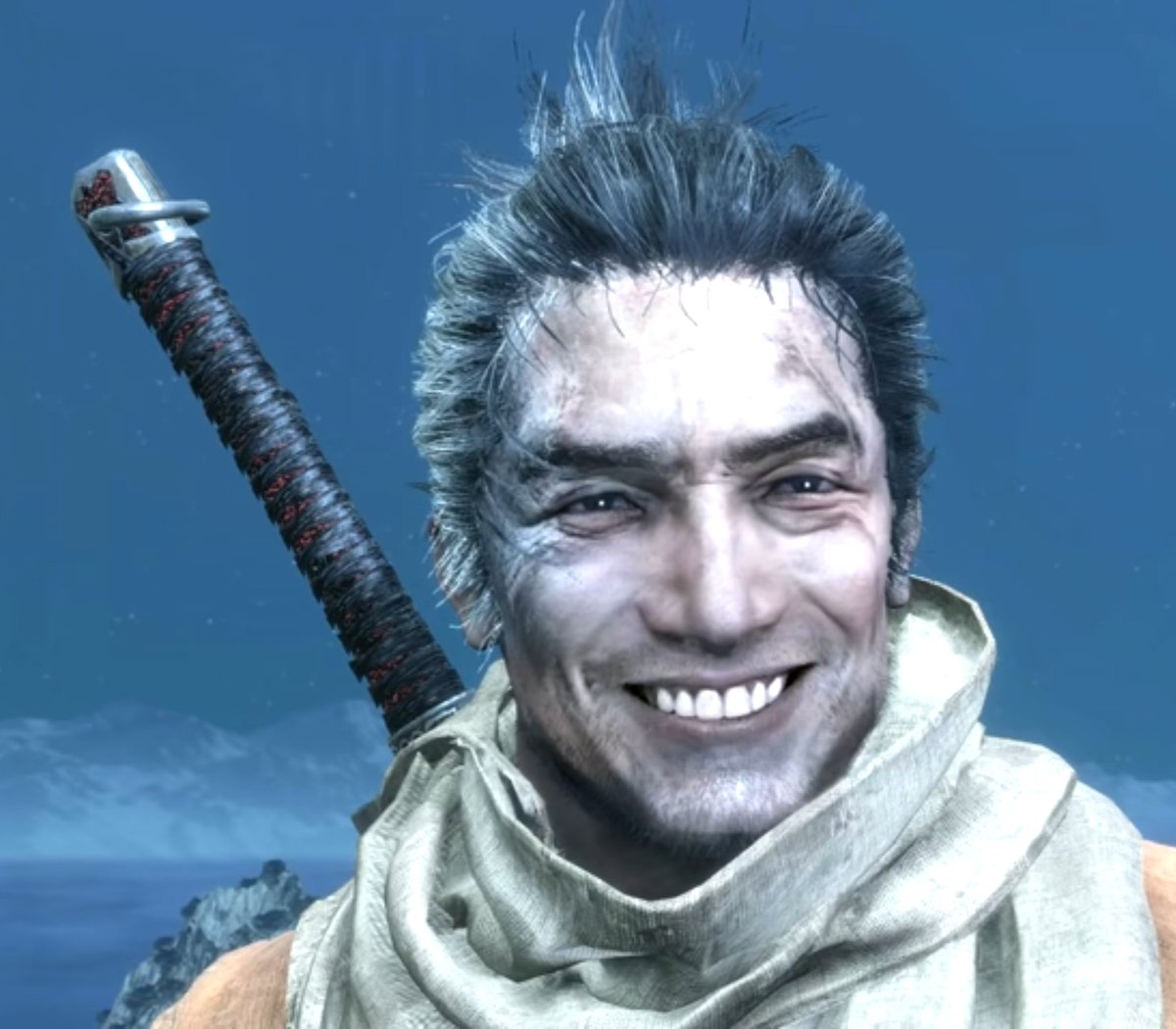A kind soul translated the Elden Ring bit, but the rest of this Media Arts Festival Q&A (about Sekiro& #39;s game systems) was also quite fun, so here is a thread of some choice snippets. (Answers from Miyazaki discussed by judges Takashi Tokita and "Sawayaka") https://www.youtube.com/watch?v=k_T_2LMf6m4">https://www.youtube.com/watch...
Q: Why was ninja chosen as the theme?
A: I wanted players to enjoy freely traversing a richly detailed, multi-layered map and have intense sword battles with a certain bravado to them. A ninja protagonist allowed us to explore these themes in a sincere, coherent way...
A: I wanted players to enjoy freely traversing a richly detailed, multi-layered map and have intense sword battles with a certain bravado to them. A ninja protagonist allowed us to explore these themes in a sincere, coherent way...
A: (cont.) From an artistic standpoint as well, Japanese-style worldbuilding presented a fascinating new challenge.
The judges comment on this unique depiction of the Sengoku era, which at once embraces a sense of reality and the romance of Japanese fantasy.
The judges comment on this unique depiction of the Sengoku era, which at once embraces a sense of reality and the romance of Japanese fantasy.
Q: How did you define Sekiro within an established ninja genre?
A: Tbh it wasn& #39;t a conscious decision to have ninja as the genre or defy an existing genre. Although as a result of our goals for the ninja themes, I think it became a more aggressive version of the archetype...
A: Tbh it wasn& #39;t a conscious decision to have ninja as the genre or defy an existing genre. Although as a result of our goals for the ninja themes, I think it became a more aggressive version of the archetype...
A: (cont.) You put yourself in the middle of these fierce battles and use everything at your disposal to slay the enemy. You& #39;ll need to cross swords at some point, so stealth (in the context of ninja) for example, is just one of the means you& #39;re asked to make full use of.
The judges tangent on the disconnectedness of such a protagonist, his revenge drama, and how the world falls ill around him. They also mention the depiction of blood, likening it to old Kurosawa films, in that it briefly breaks away from realism in favour of playing to the crowd.
Q: Any works you took inspiration from or referenced?
A: We didn& #39;t reference anything specifically, but I would say we were influenced by aspects of historical plays/period dramas that place emphasis on the grandiose and ostentatious...
A: We didn& #39;t reference anything specifically, but I would say we were influenced by aspects of historical plays/period dramas that place emphasis on the grandiose and ostentatious...
A: (cont.) Futaro Yamada& #39;s "Ninpōchō" series, Norio Nanjō& #39;s "Suraga-jo Gozen Jiai" and Hiroaki Samura& #39;s "Mugen no Jūnin" to name a few.
(By the way, "Mugen no Jūnin"/"Blade of the Immortal" is an awesome manga, and if you enjoyed Sekiro I highly recommend checking it out.)
(By the way, "Mugen no Jūnin"/"Blade of the Immortal" is an awesome manga, and if you enjoyed Sekiro I highly recommend checking it out.)
The judges note how the works mentioned go beyond the simple premise of "sword fighting" to present more fantastical versions of period drama, and how Sekiro shares with these a strangely realistic portrayal of pain.
Q: What areas of game design are you particular about?
A: That& #39;s a difficult question. I& #39;m still inexperienced, using trial and error to just about make it through each title, so getting overly hung up on things would be greatly detrimental in that it narrows the possibilities...
A: That& #39;s a difficult question. I& #39;m still inexperienced, using trial and error to just about make it through each title, so getting overly hung up on things would be greatly detrimental in that it narrows the possibilities...
A: (cont.) I also feel each game we try to make requires us to fuss over different things, depending on what sort of values or purpose we& #39;re looking to exhibit.
Judges comment on how this sense of value is reflected in the player& #39;s actions; giving us pause as we progress.
Judges comment on how this sense of value is reflected in the player& #39;s actions; giving us pause as we progress.
Q: Why did you opt for a single-player game?
A: There are several reasons why Sekiro was designed as a single-player game. Naturally there were budgetary limits and we wanted to optimise within allotted resources, but game design decisions played a bigger part...
A: There are several reasons why Sekiro was designed as a single-player game. Naturally there were budgetary limits and we wanted to optimise within allotted resources, but game design decisions played a bigger part...
A: (cont.) When we considered our aim to create dynamic movement and intense, flamboyant swordplay, we thought we would be better able to represent the personality, fun, and values of this title by casting off the constraints associated with a game built with multiplayer in mind.
The judges then have a nice long chat about how single and multiplayer games are almost like two different modes of entertainment, in how we perceive and approach them, and spend different amounts of time and energy immersing ourselves in them. (Super lazy abridgement here https://abs.twimg.com/emoji/v2/... draggable="false" alt="😅" title="Lächelndes Gesicht mit offenem Mund und Angstschweiß" aria-label="Emoji: Lächelndes Gesicht mit offenem Mund und Angstschweiß">)
https://abs.twimg.com/emoji/v2/... draggable="false" alt="😅" title="Lächelndes Gesicht mit offenem Mund und Angstschweiß" aria-label="Emoji: Lächelndes Gesicht mit offenem Mund und Angstschweiß">)
Q: How do level design considerations differ when making online/offline games?
A: I think there are a lot of differences. In Sekiro& #39;s case, we didn& #39;t need to consider fairness or discomfort between human opponents, which opened up a range of mechanics, experiences and actions.
A: I think there are a lot of differences. In Sekiro& #39;s case, we didn& #39;t need to consider fairness or discomfort between human opponents, which opened up a range of mechanics, experiences and actions.
The judges comment on how you still need a fair battle between developer and player, even if multiplayer balancing isn& #39;t a factor. A Sekiro player improves as they adapt to the lessons taught through gameplay. The point of "awakening" may be different for everyone!
Q: What& #39;s your criterion for setting difficulty?
A: The point of difficulty is the feeling of accomplishment after emerging victorious. An ideal level of difficulty should feel tough while still letting you overcome the odds. It should be fair, not unreasonably difficult...
A: The point of difficulty is the feeling of accomplishment after emerging victorious. An ideal level of difficulty should feel tough while still letting you overcome the odds. It should be fair, not unreasonably difficult...
A: (cont.) Everything was driven by this ideal; from fixed enemy placement and clear weaknesses, to a consistent rhythm learned through muscle memory when battling each powerful foe. Although, we& #39;re still lacking in many such areas. It& #39;s something I& #39;m keen to investigate further.
Judges recall old coin-op games and how the best ones walked a thin line between "To hell with this!" and "Just one more try"... It& #39;s even harder to strike a balance these days. Every type of enemy AI must be fine-tuned and tested to make sure the player owns each failure.
Q: What& #39;s the significance of "Death" and "Resurrection"?
A: Death - in Dark Souls, etc. as well as Serkiro - means a temporary fault in strategy, and this is something that we assume should naturally occur within the gameplay cycle...
A: Death - in Dark Souls, etc. as well as Serkiro - means a temporary fault in strategy, and this is something that we assume should naturally occur within the gameplay cycle...
A: (cont.) I think one characteristic of these games is that they& #39;re designed with death occurring as a natural part of the experience. I suppose my tendency to try and define death and retrying within the worldbuilding of these games may be rooted in this trait.
The judges compare with games where retrying is taken more for granted, as well as those that incorporate permadeath. They figure having the player experience death and resurrection in a world like Sekiro& #39;s helps reinforce other themes of mortality and its portrayal of pain.
Q: Is the constant threat of a quick death tied to enjoyment, or based on a call for realism?
A: As answered earlier, a high degree of difficulty lets the player feel a sense of mastery and fulfillment, which I believe leads to finding enjoyment and worth within the game...
A: As answered earlier, a high degree of difficulty lets the player feel a sense of mastery and fulfillment, which I believe leads to finding enjoyment and worth within the game...
A: (cont.) Particularly with Sekiro, putting constant strain on the player allowed us to depict these stoic, ninja-like hardships. On the other hand, dying too often would spoil the game flow, which we aimed to avoid by adopting the "Resurrection" system.
(End of thread!)
(End of thread!)
Phew! That& #39;ll have to do for now.
Thanks to anyone who made it through this! I got a bit carried away https://abs.twimg.com/emoji/v2/... draggable="false" alt="🤓" title="Nerd-Gesicht" aria-label="Emoji: Nerd-Gesicht">but thought it would be fun to share.
https://abs.twimg.com/emoji/v2/... draggable="false" alt="🤓" title="Nerd-Gesicht" aria-label="Emoji: Nerd-Gesicht">but thought it would be fun to share.
Everyone stay safe and enjoy the rest of your week.
Thanks to anyone who made it through this! I got a bit carried away
Everyone stay safe and enjoy the rest of your week.

 Read on Twitter
Read on Twitter

 but thought it would be fun to share.Everyone stay safe and enjoy the rest of your week." title="Phew! That& #39;ll have to do for now.Thanks to anyone who made it through this! I got a bit carried awayhttps://abs.twimg.com/emoji/v2/... draggable="false" alt="🤓" title="Nerd-Gesicht" aria-label="Emoji: Nerd-Gesicht">but thought it would be fun to share.Everyone stay safe and enjoy the rest of your week." class="img-responsive" style="max-width:100%;"/>
but thought it would be fun to share.Everyone stay safe and enjoy the rest of your week." title="Phew! That& #39;ll have to do for now.Thanks to anyone who made it through this! I got a bit carried awayhttps://abs.twimg.com/emoji/v2/... draggable="false" alt="🤓" title="Nerd-Gesicht" aria-label="Emoji: Nerd-Gesicht">but thought it would be fun to share.Everyone stay safe and enjoy the rest of your week." class="img-responsive" style="max-width:100%;"/>


